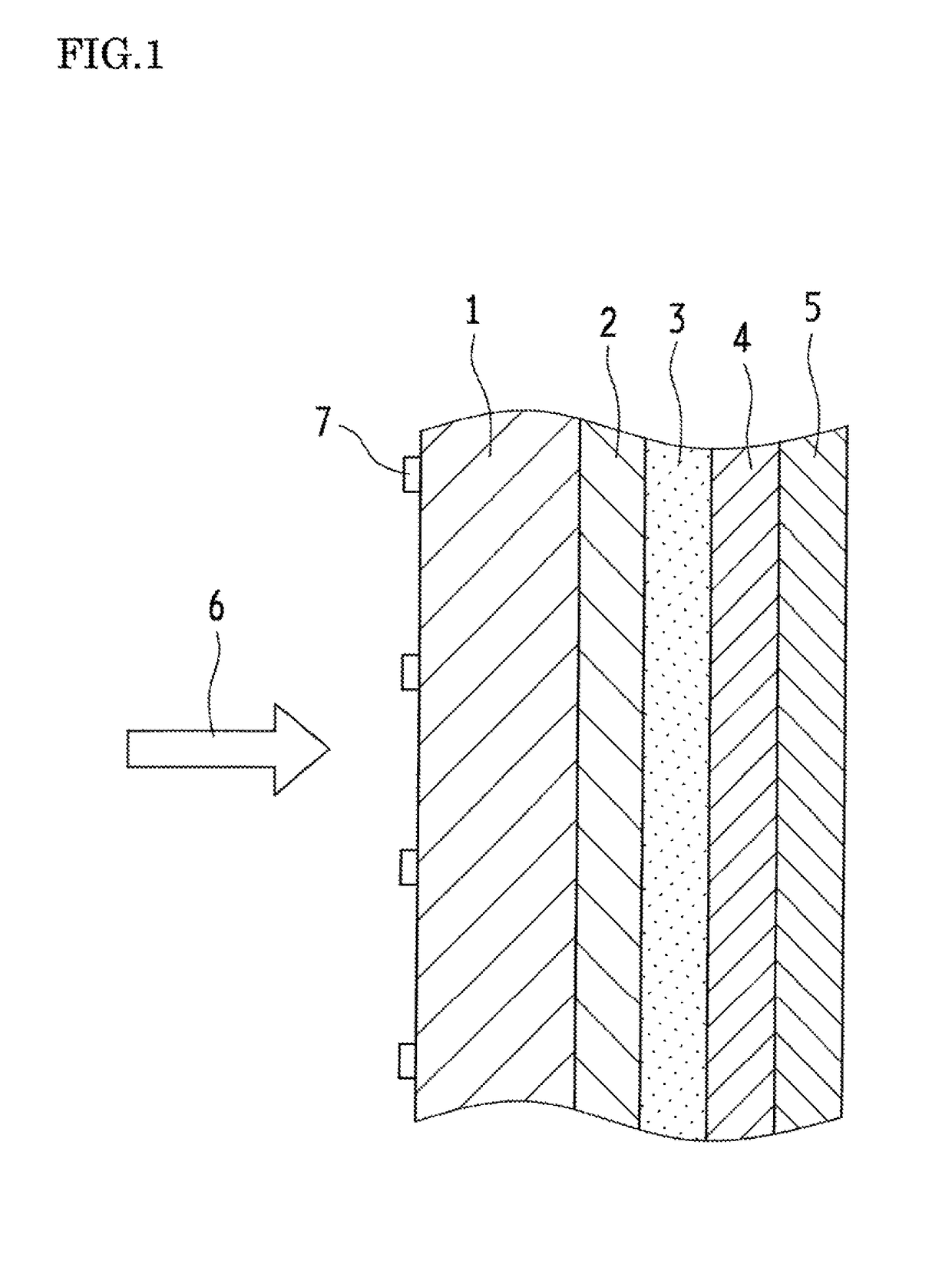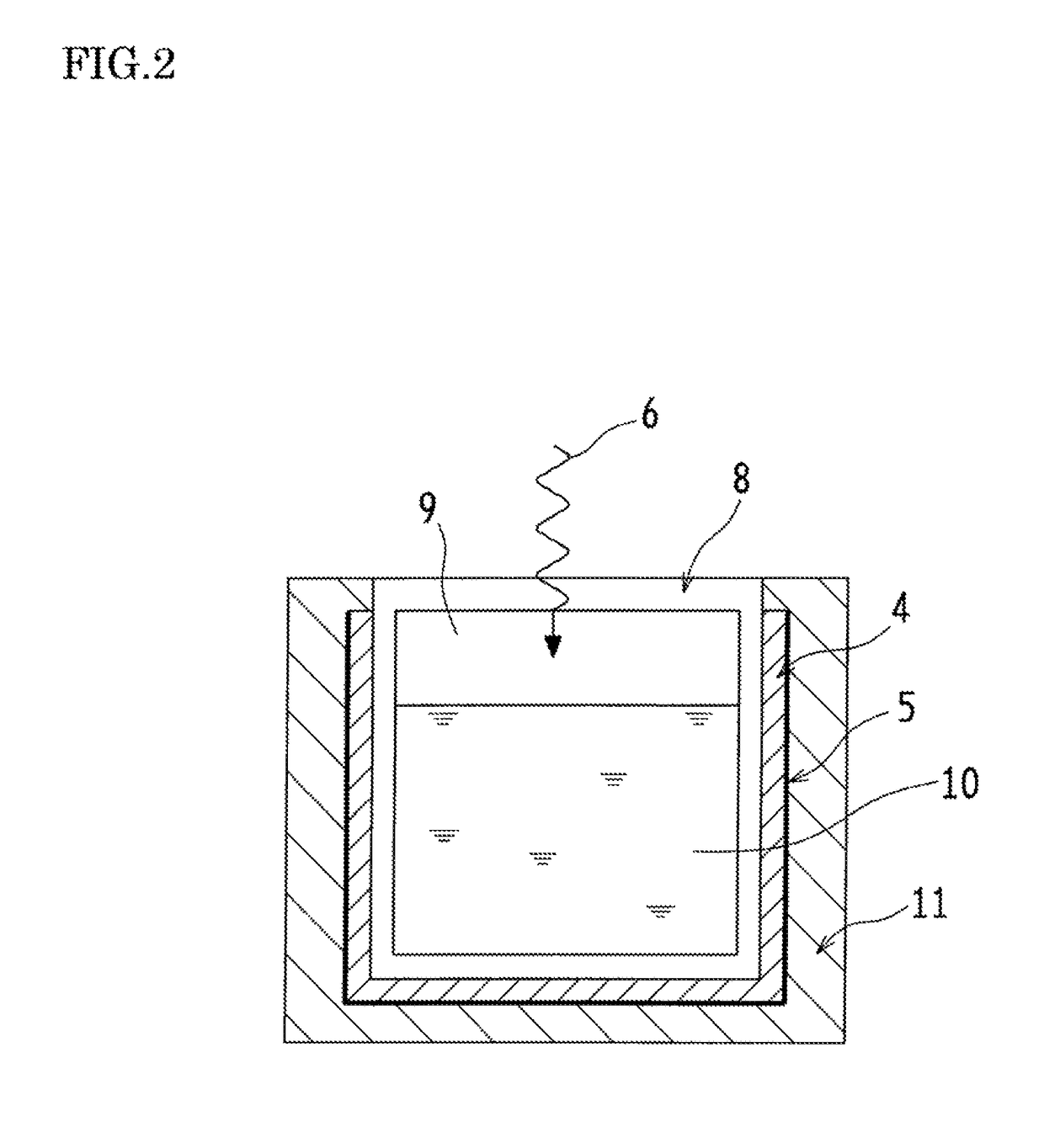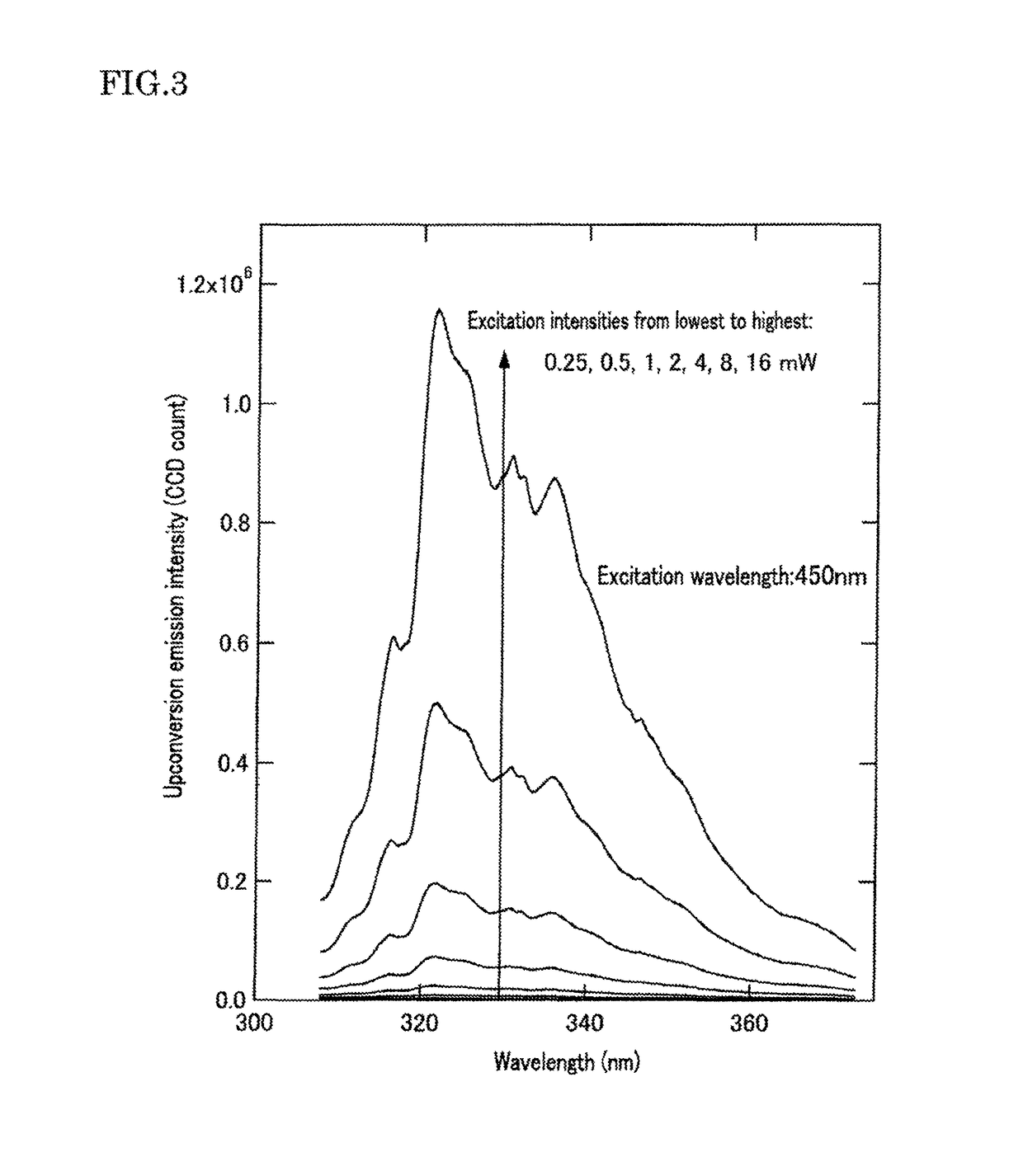Optical wavelength conversion element containing ionic liquid, and article equipped with said optical wavelength conversion element
a technology of optical wavelength conversion and ionic liquid, which is applied in the direction of instruments, physical/chemical process catalysts, non-metal conductors, etc., can solve the problems of difficult to target weak light, such as sunlight, for conversion in this method, and the emission intensity of upconversion is markedly decreased, and achieves good temporal stability and high optical wavelength conversion efficiency
- Summary
- Abstract
- Description
- Claims
- Application Information
AI Technical Summary
Benefits of technology
Problems solved by technology
Method used
Image
Examples
example 1
Preparation of Optical Wavelength Conversion Element
[0238]400 μL of 1-butyl-2,3-dimethylimidazolium bis(trifluoromethylsulfonyl)imide (CAS Number: 350493-08-2; manufacturer: IoLiTec Ionic Liquids Technologies GmbH; hereinafter “Ionic Liquid #1”) as the water-immiscible ionic liquid (C) was put in a glass vial (capacity: approximately 8 mL) at room temperature. Subsequently, approximately 20 μL of a stock solution, or a 4×10−3 M toluene solution of 10-methyl-9-acridone (CAS Number: 719-54-0; manufacturer: Tokyo Chemical Industry Co., Ltd.; hereinafter, “Sensitizing Molecules #1”) as the organic photosensitizing molecules (A), was added to this Ionic Liquid #1 to obtain a visually non-homogeneous mixed liquid. Similar to the method described in Patent Document 3, this mixed liquid underwent repeated suction-and-ejection using a glass Pasteur pipette (manufacturer: Fisher Scientific Inc.; Product Number: 5-5351-01) until a visually homogeneous and transparent, single-layer mixed liquid...
example 2
[0244]Another optical wavelength conversion element was prepared and evaluated by completely the same procedures as in Example 1, except that 1-butyl-1-methylpyrrolidinium bis(trifluoromethylsulfonyl)imide (CAS Number: 223437-11-4; manufacturer: Merck KGaA; hereinafter “Ionic Liquid #2”) as the water-immiscible ionic liquid (C) was used in place of the Ionic Liquid #1 in Example 1. Results are shown in FIG. 5 (the optical wavelength conversion element showed photoemission maxima at 315.9 nm, 321.0 nm, 330.8 nm, and 335.4 nm in wavelength). The results are similar to those shown in FIG. 3, except for the slightly different shapes of the upconversion emission spectra that are attributable to the use of ionic liquids of different properties. The results shown in FIGS. 3 and 5 confirm that the present invention can be carried out irrespective of the type of ionic liquid used. In addition, FIG. 6 shows an optical absorption spectrum of the optical wavelength conversion element as measure...
example 3
[0246]Another optical wavelength conversion element was prepared by the same preparation procedures as those for the optical wavelength conversion element of Example 1, except that the Ionic Liquid #2 was used in place of the Ionic Liquid #1 and that 1-cyanonaphthalene (CAS Number: 86-53-3; manufacturer: Sigma-Aldrich Co. LLC; hereinafter, “Light-emitting Molecules #2”) as the organic light-emitting molecules (B) was used in place of the Light-emitting Molecules #1.
[0247]The Continuous Wave Laser Light #1 was irradiated onto this optical wavelength conversion element at a power of 5 mW. The measurement was performed by the same evaluation procedures as those for the optical wavelength conversion element of Example 1. The obtained upconversion emission spectrum is shown in FIG. 7 (the optical wavelength conversion element showed photoemission maxima at 318.3 nm, 329.1 nm, and 338.2 nm in wavelength). In addition, FIG. 8 shows an optical absorption spectrum of the optical wavelength c...
PUM
| Property | Measurement | Unit |
|---|---|---|
| absorption wavelengths | aaaaa | aaaaa |
| emission wavelength | aaaaa | aaaaa |
| temperatures | aaaaa | aaaaa |
Abstract
Description
Claims
Application Information
 Login to View More
Login to View More - R&D
- Intellectual Property
- Life Sciences
- Materials
- Tech Scout
- Unparalleled Data Quality
- Higher Quality Content
- 60% Fewer Hallucinations
Browse by: Latest US Patents, China's latest patents, Technical Efficacy Thesaurus, Application Domain, Technology Topic, Popular Technical Reports.
© 2025 PatSnap. All rights reserved.Legal|Privacy policy|Modern Slavery Act Transparency Statement|Sitemap|About US| Contact US: help@patsnap.com



